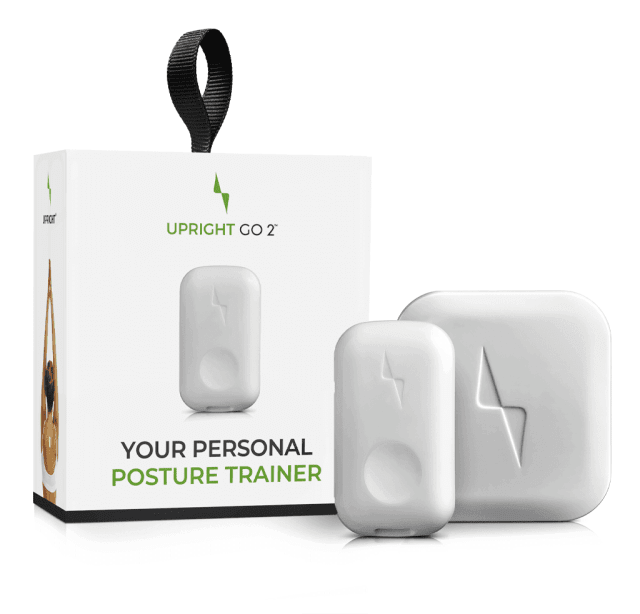Proper Driving Posture – What is the Perfect Driving Position?
Upright

What You Need to Know About Proper Driving Posture
There’s certainly wonderful freedom that comes with operating a car, but as with all freedoms, it comes with responsibility. Specifically, you must be responsible enough to operate the vehicle safely. That includes knowing the proper driving posture to use, especially for long drives.
Why Does Driving Posture Matter?
Not every car lends itself particularly well to good posture. Some cars are so small that they lack the headspace and legroom necessary to sit comfortably. Many also have seats that are too straight and stiff to hold the natural curve of your spine. Nevertheless, making an effort to position yourself ergonomically is essential if you want to avoid sustaining a long-term injury, limited mobility, and chronic pain due to straining the muscles in your back, neck, shoulders, arms, elbows, wrists, and legs. Of course, even short-term discomfort is undesirable; who wants to end a road trip feeling sore everywhere? On top of all that, poor posture makes you more likely to get seriously hurt in a car accident.
Simply put, proper driving posture helps you stay healthy and whole. Unfortunately, many people have a natural tendency to pay little attention to the way that they sit or stand. It may be challenging to control that part of yourself so that you can hold the correct driving position, but it’s certainly doable if you apply a few tips.
Recommendations for Good Driving Posture
There are three main areas of your body on which you should focus to maintain good posture. As long as you take care of them, the rest of your body can’t help but follow, since they’re all connected to them in some way. The easiest way to do it is to learn to associate certain aspects of driving with the car seat ergonomics for the perfect driving position.
Neck
Have you ever noticed that you have a tendency to incline your head forward when you’re busy with your phone or computer? This is known as “text neck,” but it applies to drive, too. You may be so focused on watching the road that you subconsciously lean your head forward, straining your neck.
Of course, you should strive to be aware of this tendency and keep your chin up. Additionally, before driving, you should check that you can see out your rear and side mirrors without having to crane your neck. However, you can also get into the habit of stretching your neck every time you’re at a stoplight if you’re driving in the city streets or whenever you pass an exit sign when you’re on the freeway. It doesn’t have to be anything elaborate; just slowly nod your head or tilt it from side to side. This helps your muscles stay loose while keeping you aware of your neck’s position.
Shoulders
Slouching your shoulders helps you feel relaxed, at least for a short while, and it’s not always bad. You need a break sometimes. However, repeated and prolonged slouching lets your back and shoulder muscles become weak and prone to injury. Unfortunately, if you struggle with “text neck,” you’ll find slouched shoulders often accompany the problem.
Perhaps you’re the type of driver who has the opposite issue, though. You might be so zoned into every detail on the road that you’re leaning forward and hunching your shoulders. This, too, can have an adverse effect on them. Tense muscles in your shoulders, arms, elbows, and wrists become sore and knotted.
Try to keep your shoulders squared the whole time that you’re driving, and incorporate some additional tricks to help you remember. You may have heard that you should keep your hands at the ten o’clock and two o’clock spots on the steering wheel. If you’re not already in the habit of doing that, mark those spots somehow, perhaps with string or velcro straps. By making sure your hands stay there, your shoulders are more likely to stay squared. They slouch easier if you let your hands drift to lower parts of the steering wheel, and you’ll probably hunch them if your hands grip the eleven and twelve o’clock spots.
Back
The way that you hold your neck and shoulders directly affects the way that you carry your back and vice versa. Although the spinal cord is wonderful for giving us the ability to walk on two legs and use our hands for other things, it doesn’t handle strain very well. Back pain is common because it’s easy to forget that it needs to be kept straight and free of pressure.
Obviously, the first thing you should do when you get into your vehicle is to make sure that your seat is adjusted to a proper distance from the steering wheel. You shouldn’t have to stretch your arm to reach it if you lean backward, nor should you feel squished between the seat and the horn. Check that you don’t need to crane your neck to see out the windshield when you’re sitting with your rear end and pelvis against the seat, which is where they should be in order to get the support they need.
Your head should be able to lay comfortably and squarely against the headrest, too, and let your knees dip slightly over the edge of the seat to keep your hips open. Also, raise the seat that your eyes are at least three inches above the wheel. Finally, for good measure, get a lumbar support pillow or backrest to place between your lower back and the seat. It’s made to accommodate the curve of your spine so that it can rest naturally.
You may also consider investing in a posture trainer, like the UPRIGHT GO, which you can wear all day, including when you’re in the car. By providing structural support and softly vibrating when you slouch, it will help you ensure proper driving posture. Specifically, it will encourage your spine to remain correctly aligned, regardless of what you’re doing. In that way, you’ll certainly be safer and more comfortable while driving.
You Might also Like
Search
Sign up to our newsletter
Follow Us On
Popular
Revisit the GO 2/S Device Setup
How to get started
Finding your upright position
How to find your target upright posture
Calibration
Check out the UPRIGHT GO 2

